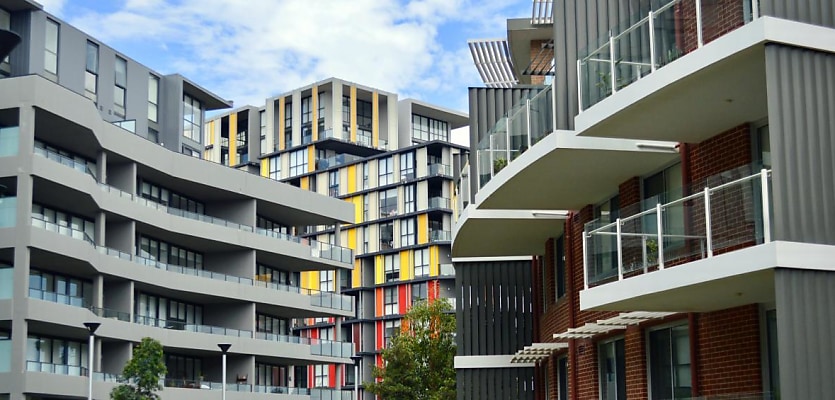The build-to-rent sector is projected to hit record levels in 2025, led by Victoria, NSW and Queensland.
The built-to-rent sector is expected to set a new record, with 6,000 units to be delivered this year, compared to 4,660 units finished in 2024.
A new Knight Frank report, Australia Build to Rent Update Q3 2025, showed that since the beginning of 2025, four BTR schemes started, adding 1,298 units, taking annual delivery to 6,000 units nationwide.
Since 2018, 11,944 BTR units have been delivered, with a further 11,368 units currently under construction across the country.
Knight Frank data showed that a further 47,033 units are currently sitting at various development approval stages or in early planning.
Victoria continues to be a leader in the BTR sector, with 13,198 BTR units either completed or under construction, and an additional 12,632 underway, totalling 25,830.
NSW follows suit with 5,335 units completed or under construction, and 16,690 in the pipeline to reach 22,025.
Rounding up the podium, Queensland has 4,157 units completed or under construction, with another 12,122 upcoming to total 16,279.
The firm said that while 2025 will reach record levels, 2026 will see stock levels dwindle as only 4,000 units have been forecast to be delivered.
Knight Frank partner, living sectors, valuation and advisory, John-Paul Stichbury, said that the anticipated drop in BTR stock deliveries stems from the feasibility challenges that residential developers have faced over the past few years.
“The good news is that market and macroeconomic conditions are now stabilising, providing an improving backdrop for BTR investment activity,” he said.
“Recent signs of easing build cost inflation, reducing interest rates, and improving access to capital are renewing confidence across the market.
“A consistent pipeline of new project commencements is needed to ensure that the recent slowdown is only a short-term blip, and central to this is the ability to activate the pool of approved schemes.”
Knight Franck data showed that currently, 20,500 units have been sitting at the DA-approved stage.
Tim Holtsbaum, Knight Frank head of alternatives, Australia, said that continuous supportive policies could boost the sector’s appeal to investors and developers in Australia and accelerate project viability and delivery.
In November 2024, Parliament passed the Build-to-Rent Bill, aiming to deliver 80,000 rental homes over the next decade and introducing longer tenancies, stronger tenant protections, stricter affordable housing rules, and greater incentives for foreign investors.
The bill also cut the withholding tax for foreign investors from 30 per cent to 15 per cent, and raised the capital works tax deduction from 2.5 per cent to 4 per cent, allowing depreciation over 25 years to enhance project viability.
More recently, in June 2025, the NSW government announced a 50 per cent reduction in land tax exemption for eligible BTR projects in a bid to boost rental housing supply.
Holtsbaum said while progress has been happening on the policy front, the government should ensure faster delivery and a standardised regulation across the states.
Similarly, he said that high taxes on foreign investors remain a challenge, slowing down Australia’s competitiveness on the international scene.
“As global investors scale up their exposure to the living sectors, more entrants are expected to enter the market as the sector is maturing,” he said.
“Operational schemes are demonstrating strong performance, with high occupancy rates and steady rental growth, which is providing added confidence to the market and investors,” Holtsbaum concluded.
ABOUT THE AUTHOR








You are not authorised to post comments.
Comments will undergo moderation before they get published.